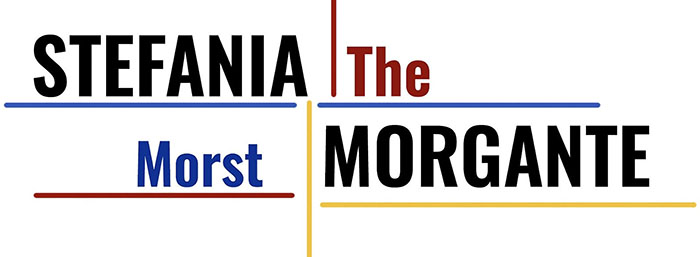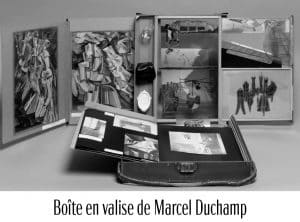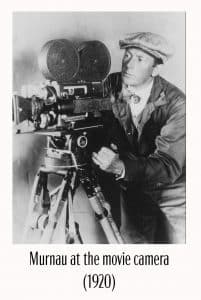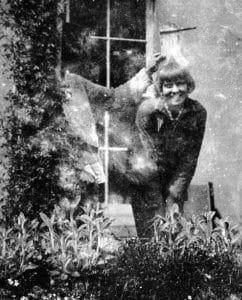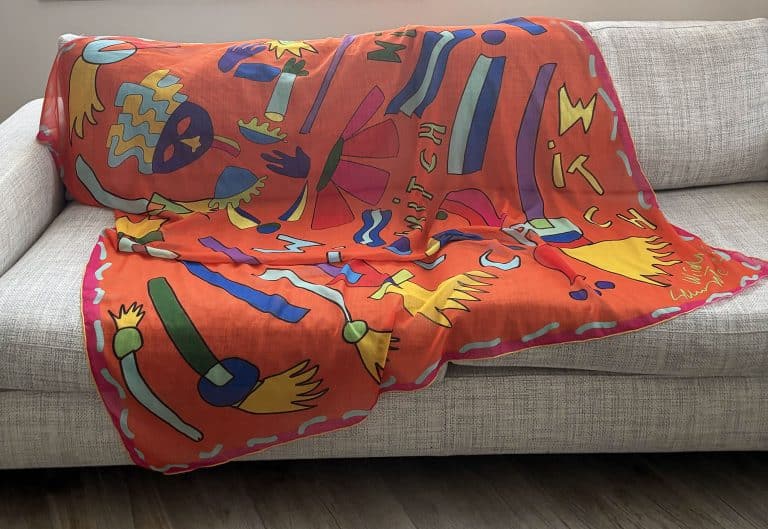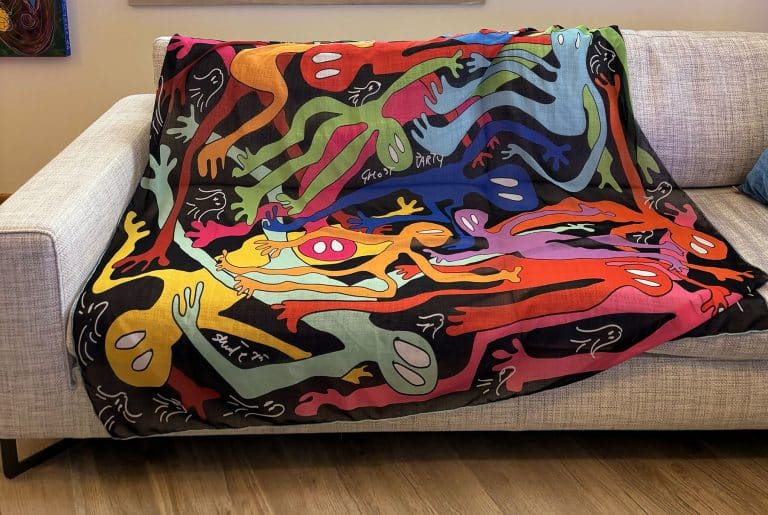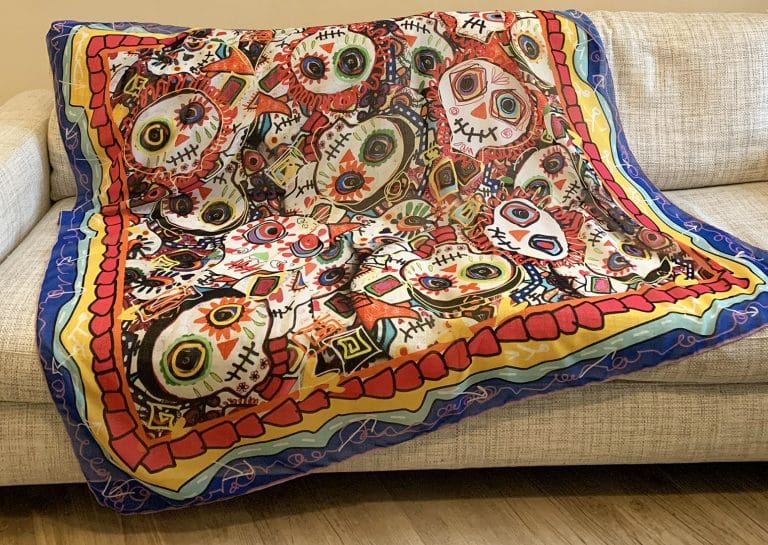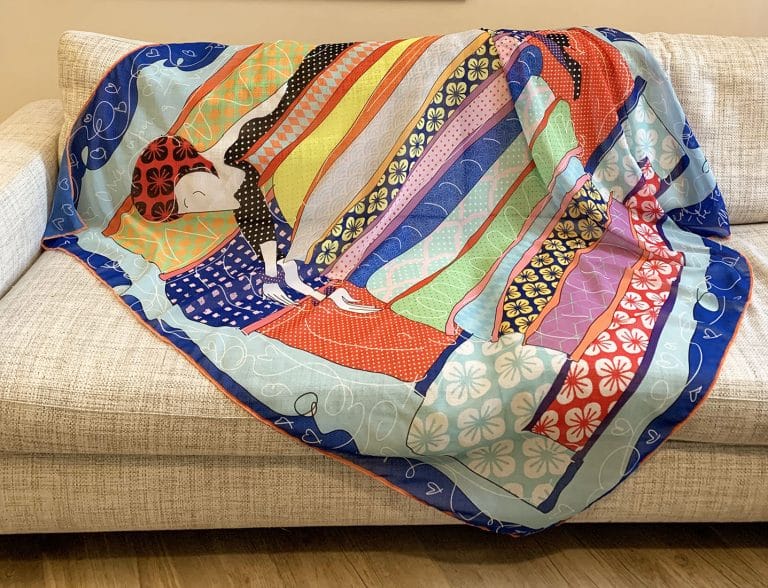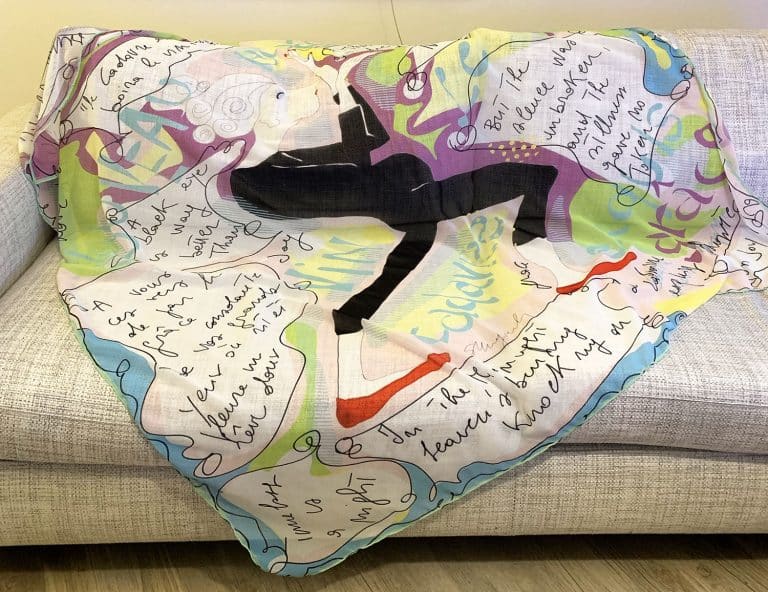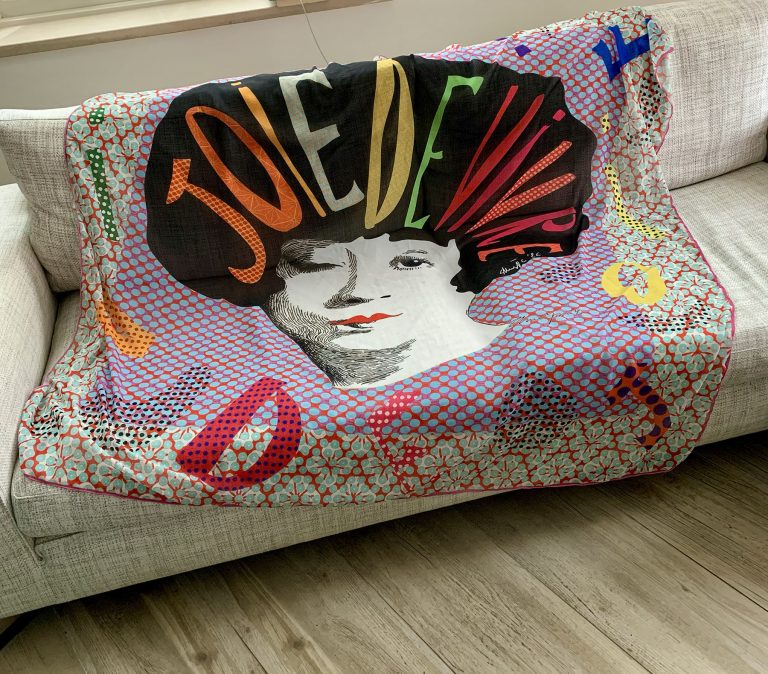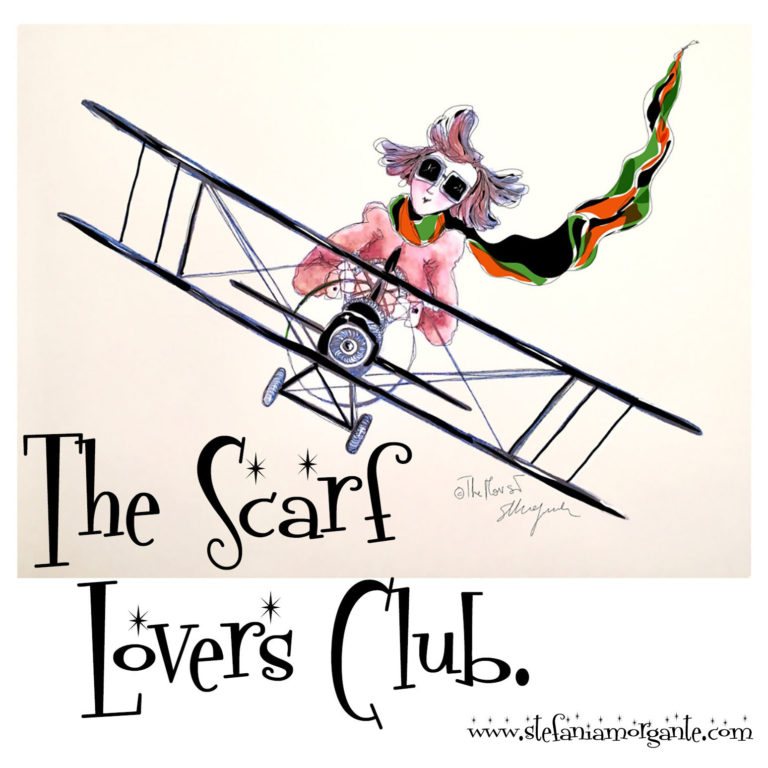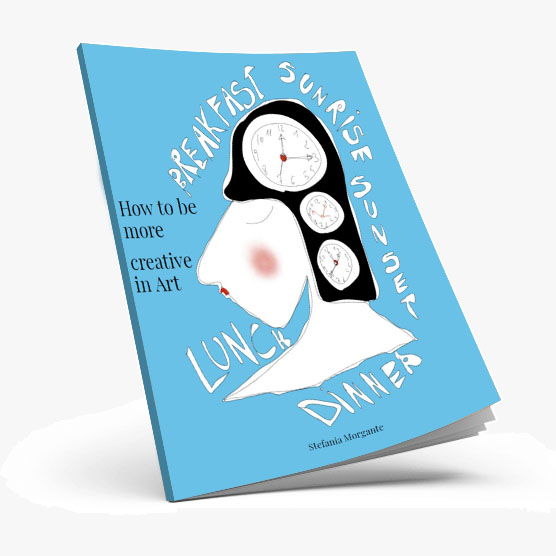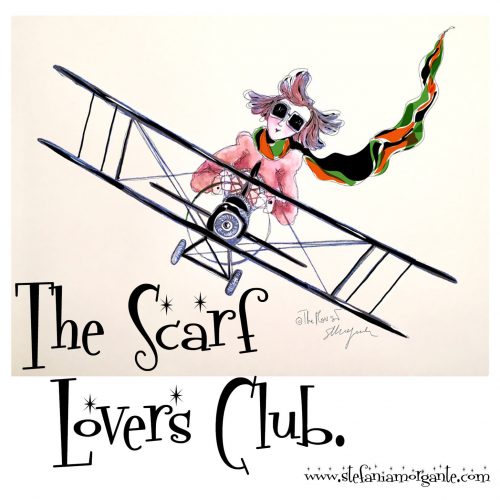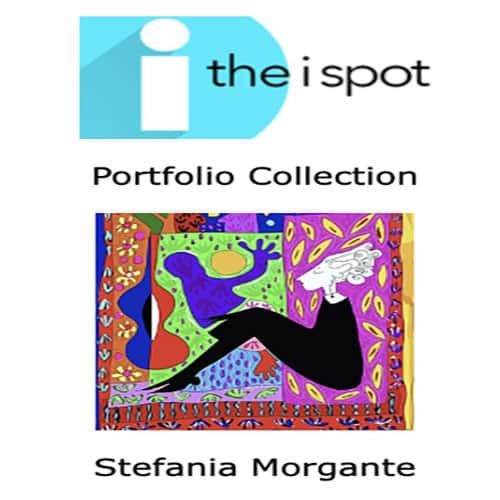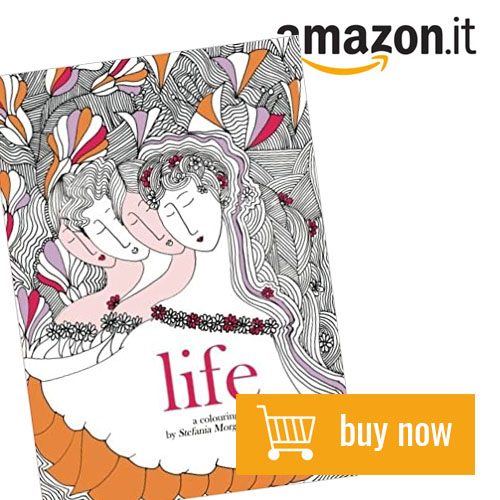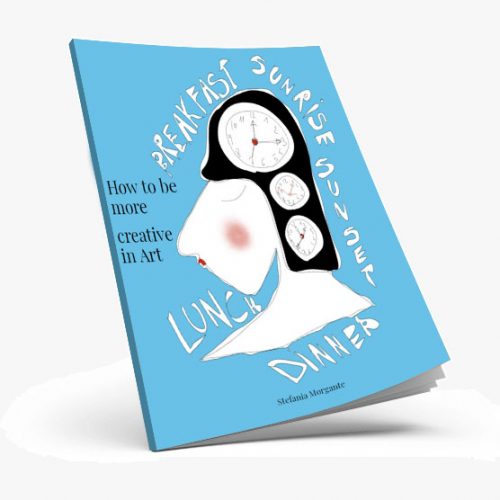-Tell us who are you, where are you from, what was your education and which is the world you are representing in your art.
My name is Irene Raspollini, I was born in Siena and I live in a small village in Tuscany named Scalvaia, a place where there are more cats than inhabitants. I also lived in Ferrara and Bologna some time ago, but recently me and my fianc decided to come back where I was grown. I earned with honors a bachelor in Communication sciences, a master degree in Publishing and a postgraduate specialization in Training and HR in three different universities. I worked as press agent, economic researcher and employee, but I finally left all this to become a full time artist, after many years in which I was considering art as an hobby. I’m a self taught artist and my works are mainly figurative; my personages are characterized by big almond eyes and rosy cheeks, they live in a saturate and colorful world and they are at their ease especially in surreal situations.
-Which is your favorite technique and how did you improved your skills according to your own style?
I worked for many years with watercolors, but now I prefer acrylics: they dry fast, they are resistant and they allow me to work easily on canvas, making my life easier when I have to send my artworks abroad for an exhibition or to ship them to foreigner buyers. Acrylic is more difficult as it seems: as it dries fast, it’s difficult to obtain smooth gradients; many colors are transparent, so it’s difficult to paint solid sections avoiding evident strokes signs. With this technique, we must work layer after layer.
-Do you have a sketch book? Do you need to write down your ideas?
No, I don’t have a sketch book. I rarely make a quick sketch in random pieces of papers, but most of times I draw the sketch directly on the canvas. I make regular sketches only for commissioned artworks, because such works need the committer approval during every step.
-Favorite authors and books: in art, music, literature. And how your art is influenced by them.
All concepts and visual inputs I step into influence my work, some times immediately, some other times after months or even years. I absolutely love the borderline and the popular art, which often is realized by wonderful, unknown masters.
I love vintage ex-voto made on wood or metal scraps, and I’m totally into the obsessive patterns of mentally ill artists, their violent colors and fantastic perspectives (some of my faves: Ligabue, Wolfli, Alose and Seraphine de Senlis); finally, I love the naif and vivid styles of self taught artists like Frida Kahlo or Henri Rousseau. Speaking about theatre, I like Ugo Betti, Samuel Beckett, Carmelo Bene, but also my beloved Friederich Schiller, who I adored during my adolescence. About music, it’s difficult for me to say what I love most, because I like too many different genres, from pop music to operas.
I adore the rhythm and the esthetic of 80’s heavy metal groups and the new wave music, especially Italian bands like Rats, Diaframma and Litfiba. I laugh my head off with Mozart operas, especially the ones with Da Ponte librettos: I foun them as brilliant as ’60s comedies. I love also Dvork, Sostakovic, Khachaturian and in general classical music composer from the Russian area. About literature, I love deeply Colette, Cingiz Ajtmatov, Daniil Charms, the Russian classics and the adventure book of the XIX century; among modern authors, I appreciate Douglas Coupland. In this period of my life, though, I prefer to read non-fiction books.
-Do materials influence ideas? Tell us your creative process and unveil us some painting hacks.
In the past, I’ve used some found objects in my artworks. They were useful to add sense to the work, and sometimes the object itself was the trigger of the entire creative process. In this period, though, all starts with an immaterial idea which is lately filled with colors. I’m not used to work with different textures to give some emotional vibes to the paintings, but I love when someone else does it. I haven’t hacks to unveil, or better, I think I’m the one who has to learn so much about different techniques. I think it’s a typical problem of self taught artists, and I have to deal with it every day.
-Tell us about your solo show in Mexico: what have you learned in this country? How it influenced your work?
It was a really enriching travel, especially considering human relationships. I’ve seen the popular part of the country, far from touristic sites: I lived where most Mexicans live, where the great beauty is side by side with the great poverty. I’ve seen places that reminded me a lot the plate shacks in the Italian suburbs right after the Second World War, and I encountered some situations that reminded me what my father said about his early years in my village.
Nevertheless, I’ve found beautiful people and made long lasting friendships: first of all, my dear host, the master muralist Cienfuegos, talented painter and mosaic artist, who is very active in artistic education activities and in political awareness initiatives, especially with adolescents and children; then I was lucky enough to met some of the parents of the 43 desaparecidos guys of Ayotzinapa, who are able to bear inside a terrible pain with great dignity and courage; I’ve met one of the most important restorers of historical murals in Mexico, the Italian Renato Paperetti, a lovely person who kindly let me visit one of the murals he was restoring and who guided me in a visit to the stunning murales in Mexico City market; I talked with the master luchadora Esther Moreno and her spouse Spartako, who’s also a luchador, who let me visit their Arena Azteca Budokan, one of most ancient in Mexico, and also let me train with them! Art in Mexico is crazy colored and has a very peculiar sense of composition. Music is everywhere and at the highest volume, even in work places. There are loads of talents and ideas, even in the most desperate backgrounds; nevertheless, if art is encouraged as a way to express our self, it is not supported very much as a professional career and as a way to create economic value. It is a pity, because there is a very fertile ground for arts there.
-Kitsch means bad taste, but has been recently studied and reassessed by Gillo Dorfles. What is it for you? Which is your interpretation of it?
I don’t know, for me Kitsch doesn’t mean necessarily bad taste. A good Kitsch is something that go through trends and ages, it’s something immediately recognizable, but at the same time it’s difficult to classify it. There are some places where a good Kitsch is easy to be found, for example in Eastern Europe and in Latin America, where traditional patterns meet fluorescent colors and where for real all that glitters is gold. If bad taste is annoying, a good Kitsch always irradiates good vibes. I use very often Kitsch elements in my works, but I’m afraid I have studied too much, I mean, I’m influenced by too many informations and visual inputs to make a good Kitsch piece of art. In my opinion, we are talking about something which is more related to the instinct, than with thought.
-Some suggestions for an emerging artist, no matter the age, the sex and the place. And also some no-nos.
According to my brief personal experience, I can give following advices:
– It’s important to find a personal style, as soon as possible, but after a deep and intimate reflection. Only after having found it one can propose himself as an artist and being taking serious by the audience;
-It is necessary to study foreign language, especially English. Nowadays, it is a work tool more or less like a brush;
-To be confident on what we do is fundamental, to be touchy is stupid;
-Critics are useful, but only if the critic knows what he’s talking about;
-If well used, social medias are an excellent way to enhance a creative career. Talking about our work is interesting for our followers and is also useful for us, because allows us to monitor our own progresses;
-Social networks are useful to see what our colleagues do. If we follow an artist which style is somehow similar to ours, we can see where he exhibits, which prizes wins and which art fairs attends, then we can try to do the same. Something good can happen. It is not useful, or at least it’s less effective, trying to do the same things of a colleague with a totally different style, because of the gap of audiences involved. Our efforts should always be addressed towards the right target;
-The Internet is an amazing place to find so many opportunities to show our art and to get involved in interesting initiatives, even if we are at the beginning of our career. To monitor constantly these opportunities is an excellent way to increase our artistic CV and have some chances to be considered in the international art market;
-One should never stop to improve and challenge himself. It is very important to do even what we don’t like to do and try to fix our weaknesses, because if not we can loose interesting opportunities;

-To work as an artist means to think like any other entrepreneur. He who thinks that a creative work means to be closed in his studio and wait for someone who will notice him, promoting him and paying him just because he is an artists is pure madness. He who thinks that marketing, accountability issues and communication strategies are not important, simply is not fit for this work. Of course one can be an amateur and have great satisfactions making art, and even sell his works and attend interesting exhibitions, but being a professional is another thing. I often hear people who gave up with their artistic career, blaming the fact that they didn’t have any help by critics or gallerists, or they didn’t know the right person who could recommend them. It is a very stupid and cringing attitude, very common in Italy in every kind of profession: of course connections and hookups are important, but not having them doesn’t mean nothing with Internet, where we can browse loads of interesting opportunities and get in touch with galleries and markets from all over the world.
Of course it’s not an easy process and we have to study, understand some dynamics, get involved and deal with our fails. Sometimes people manage to make the big leap and gets immediately noticed, but most of times, and this is my case, it may need years to get through it, and this means to be patient and determined.
People who loose time moaning about their failed career think often that people who succeeded was simply luckier than them, but that’s a big lie and doesn’t consider all the efforts this people made to get there. The truth is that talent is not enough, and fortune doesn’t exist, it’s just a matter of how hard you work.
-Tell us at least three things you can do when you’ll grow up.
I want to live of art all my life. Thanks to this job I’m traveling, I’m knowing special people and living peculiar experience. I don’t want anything else.
